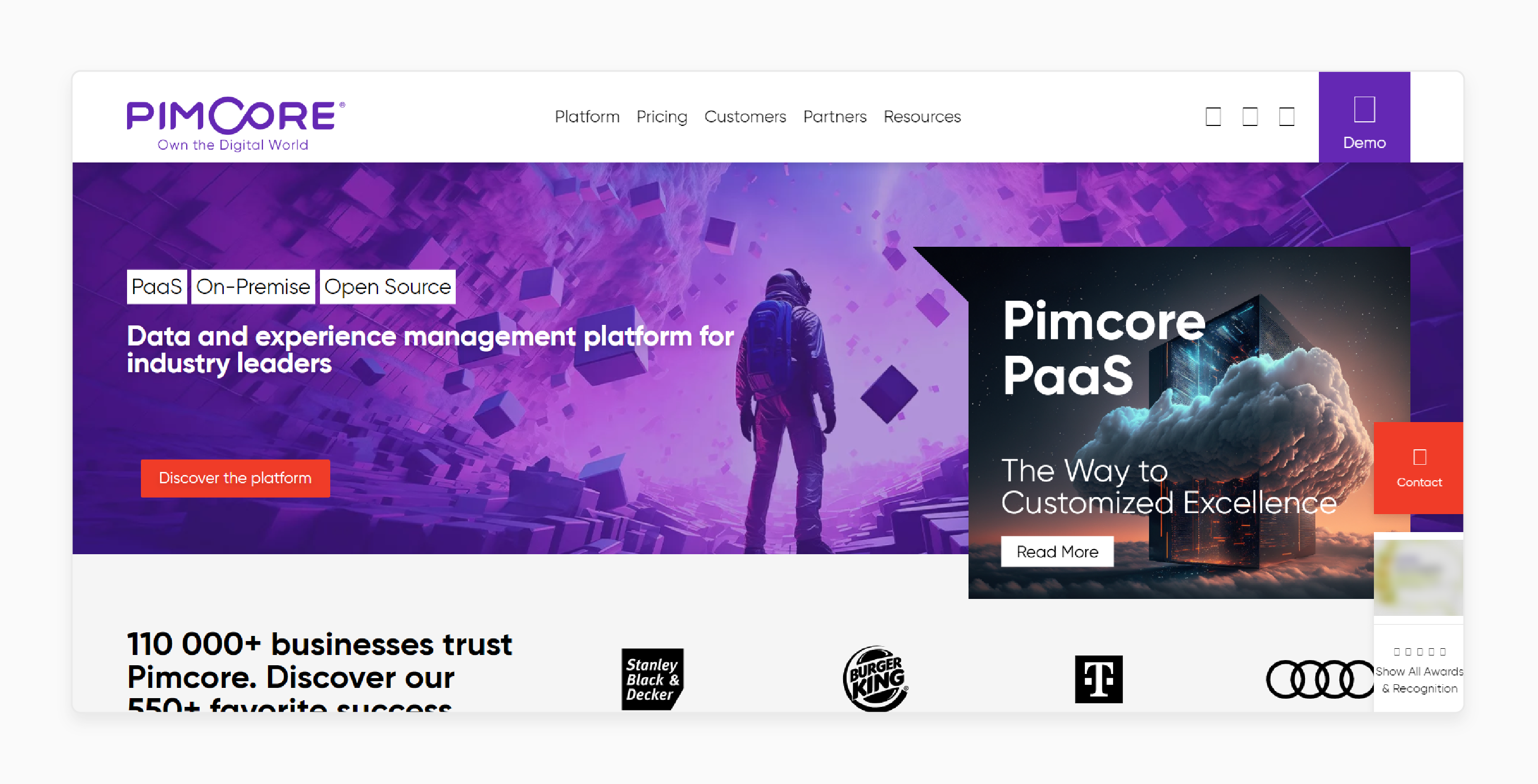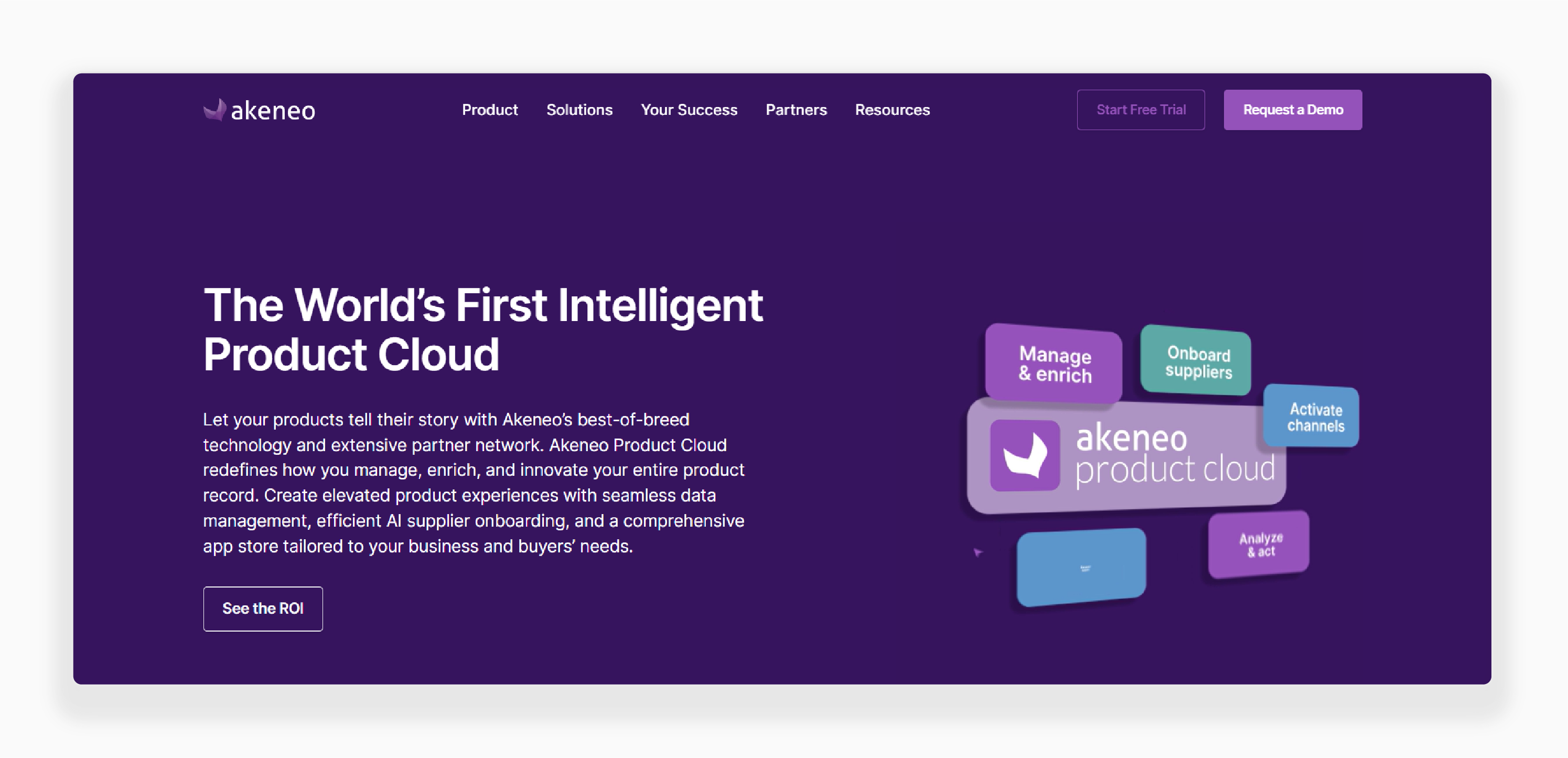
Magento 2 DAM Pimcore Connector For Asset Management
Are you looking to streamline your digital asset management? Magento 2 DAM revolutionizes asset management for your online store. This tool integrates seamlessly with Magento 2. It offers efficient and centralized management of all digital assets.
This article will cover how to leverage the Magento 2 DAM Pimcore Connector.
Key Takeaways
-
Discover the benefits of integrating Magento 2 DAM with the Pimcore Connector.
-
Learn how to set up the connector for efficient digital asset management.
-
Explore how to centralize and streamline your digital assets.
-
Understand how to enhance your e-commerce site's performance and user experience.
-
Gain insights into maintaining and updating your digital asset system.
What is a Digital Asset Management (DAM) System for Magento 2?
A Digital Asset Management (DAM) system for Magento 2 is a software solution.
It helps businesses manage and organize their digital assets, like images and documents. These assets are handled directly within their Magento 2 ecommerce platform. It serves as a centralized repository for
-
Storing
-
Managing
-
Distributing digital content
This content spreads across various sales channels. For example, instead of team members searching through folders on shared drives to find the right product images, a DAM organizes all assets in a central library. It tags them for easy retrieval. With a Magento connector, those assets can be directly linked to the relevant product pages. This approach saves considerable time and ensures the right, approved assets are always used.
Some other efficiency gains include:
-
Eliminating asset duplication across teams and departments.
-
Making assets easy to find through search and filtering.
-
Automatically resizing and formatting images for different pages and channels.
-
Simplifying collaboration on assets with version control, comments, and approvals.
Integrating a DAM system with Magento 2 simplifies business PIM processes. They can achieve seamless data synchronization between the two systems. This integration facilitates the easy insertion of images and documents. These assets are stored in the DAM system and can be directly added to Magento 2 product catalogs. It eliminates the need to download and upload them again manually.
Key Features to Look for in a Magento 2 DAM
1. Integration with Magento 2
-
Choose a DAM system with a connector designed specifically for Magento 2.
-
It ensures smooth synchronization of data between the two systems.
-
It simplifies managing and using your digital assets within your e-commerce platform.
2. Centralized digital asset storage
-
A DAM system should offer a centralized repository. This repository stores and organizes your digital assets, including images, videos, and documents.
-
This centralization provides easy access, consistency, and control. It manages your digital content across various departments and channels.
3. Metadata and tagging capabilities
-
Look for a DAM system that supports comprehensive metadata management and tagging functionality.
-
It allows you to add descriptive information to your assets.
-
It makes them easily searchable and discoverable within your Magento 2 store.
4. Search and filtering options
-
An effective DAM system should offer powerful search and filtering capabilities.
-
It allows users to quickly find assets using criteria like keywords, tags, or custom attributes. It saves time and effort in managing product data.
5. Asset version control
-
Version control is an important feature in a DAM system. It allows you to track and manage different versions of your digital assets. Version control is a key feature in DAM systems that is especially valuable when integrated with a Magento ecommerce platform. Some examples of how it helps:
-
When a new version of a product image is uploaded (e.g., with updated packaging), it can automatically replace the old version across all linked product and category pages on the site. There's no risk of outdated images lingering in some places.
-
Past versions of assets are maintained in the DAM. If a change needs to be reverted, the previous image can be restored.
-
Marketers and creatives can work on updating assets without impacting the live site. New versions can be staged in the DAM and only published to Magento once approved.
-
-
It ensures that the latest approved versions are used across your Magento 2 store and other channels.
6. User permissions and access control
-
A robust DAM system should provide granular user permissions and access control settings.
-
It ensures that only authorized users can access, modify, or publish digital assets. It maintains the security and integrity of your digital content.
Popular DAM Systems
1. Pimcore

-
Pimcore is an open-source software platform. It combines Product Information Management (PIM), Master Data Management (MDM), and DAM capabilities.
-
It offers a powerful connector for Magento 2. It enables seamless integration between the two systems.
-
The Pimcore connector for Magento 2 enables easy management and synchronization of
-
Product data
-
Images
-
Documents
It facilitates direct transfer from Pimcore to your Magento 2 store.
-
-
With Pimcore, you can centrally manage your digital assets. Users can create engaging product experiences. It ensures data consistency across multiple channels.
-
Pimcore's API-driven architecture and scalability make it suitable for businesses of all sizes. It includes small online shops and large enterprises.
2. Adobe Experience Manager (AEM)

-
Adobe Experience Manager is a comprehensive digital experience management solution. It includes DAM capabilities. AEM provides a robust connector for Magento 2.
-
With AEM, you can manage and deliver personalized content effortlessly. It includes images and documents directly to your Magento 2 store.
-
AEM features powerful workflow management and collaboration tools. These streamline the creation, review, and approval processes for digital assets.
-
Its advanced search and metadata management simplify finding and using the right assets.
-
AEM is known for its scalability. It can handle large amounts of product data and digital assets. It makes it suitable for enterprises with complex requirements.
3. Akeneo PIM

-
Akeneo PIM is an open-source Product Information Management solution. It also includes DAM capabilities.
-
With Akeneo PIM, you can centrally manage product data, attributes, and digital assets. It maintains data accuracy and consistency across your online store and sales channels.
-
Akeneo PIM provides a user-friendly interface for managing and enriching product information. It makes it easier for teams to collaborate and maintain high-quality data.
-
Its flexible data modeling and import/export capabilities adapt to your specific business needs. It allows you to integrate with various systems, including Magento 2.
-
Akeneo PIM is suitable for businesses of all sizes, from small retailers to large enterprises. It offers both open-source and enterprise editions to cater to different requirements.
Measuring the ROI of a Magento 2 DAM
1. Calculating time savings from Magento 2 DAM
-
Track the time your team spends on digital asset management before and after implementing the DAM system.
-
Consider tasks such as searching for assets. Also, consider downloading them and uploading them individually into Magento 2.
-
Calculate the monetary value of the time saved based on employee hourly rates.
2. Evaluating asset reuse with Magento 2 DAM:
-
Monitor the frequency of asset reuse across different channels and campaigns.
-
Compare the number of new assets created before and after implementing the DAM system.
-
Assess the cost savings from reusing existing assets instead of creating new ones.
-
Consider the impact of asset reuse on maintaining brand consistency. Evaluate how it improves the overall customer experience.
3. Magento 2 DAM impact on team collaboration
-
Evaluate how the DAM system enhances collaboration among team members.
-
Measure the reduction in time spent on communication and asset sharing.
-
Assess the improvement in project turnaround times due to streamlined asset management processes.
4. Tracking Magento 2 marketing campaign performance
-
Analyze the ecommerce performance of marketing campaigns before and after implementing the DAM system.
-
Measure key metrics such as click-through rates, conversion rates, and revenue generated.
-
Evaluate how high-quality and consistent assets from the DAM system impact campaign effectiveness.
-
Compare the cost and time invested in creating campaign assets with the DAM system and without it.
Here's an example table to help quantify the ROI of a Magento 2 DAM:
| Metric | Before DAM | After DAM | Improvement |
|---|---|---|---|
| Time spent on asset management per week | 20 hours | 5 hours | 75% |
| Asset reuse rate | 30% | 70% | 40% |
| Average project turnaround time | 2 weeks | 1 week | 50% |
| Marketing campaign conversion rate | 2% | 5% | 3% |
| Revenue generated from campaigns | $50,000 | $100,000 | 100% |
To calculate the ROI, use the following formula: ROI = (Gains from DAM - Cost of DAM) / Cost of DAM x 100%
FAQs
1. What is Magento 2 DAM Pimcore Connector For Asset Management?
The Magento 2 DAM Pimcore Connector is a tool that facilitates seamless integration between Magento 2 and Pimcore. It enables efficient asset management.
2. How does the Magento 2 DAM Pimcore Connector benefit my online store?
The connector streamlines the management of product data, images, and documents. It improves overall efficiency and organization in your online store.
3. What are the best Pim for Magento integration?
Tessa and Akeneo are recognized as some of the best PIM solutions for Magento 2 integration. It offers advanced features and functions tailored for ecommerce businesses.
4. Can I export products from Pimcore to Magento using this connector?
Yes, the Magento 2 DAM Pimcore Connector enables seamless export of products. It includes images and documents from Pimcore to Magento.
5. How does this connector support digital transformation for my business?
By integrating Pimcore with Magento, the connector facilitates digital transformation. It centralizes product data and assets, enabling a more agile online store setup.
6. Is the Magento and Pimcore integration done at the centimeter level?
Yes, the Magento 2 DAM Pimcore Connector allows for precise integration at the centimeter level. It ensures accurate data transfer between the platforms.
7. What are the key features and functions of the Magento 2 DAM Pimcore Connector?
The connector provides features such as direct integration of Pimcore data into Magento. It enables seamless upload of images and documents. It facilitates efficient management of product information.
Summary
Magento 2 DAM is designed to assist businesses in managing and organizing digital assets. These assets include images and documents within their Magento 2 e-commerce platform. Here is a summary of the key benefits and systems to guide your decision-making process:
-
Seamless Integration: Consider systems like Pimcore, AEM, or Akeneo PIM. They offer seamless synchronization with Magento 2, ensuring smooth operations.
-
Centralized Storage: Use a centralized repository for all your digital assets. It simplifies access, enhances consistency, and streamlines management across various departments and channels.
-
Enhanced Searchability: Implement metadata and tagging capabilities. These make digital assets easily searchable and discoverable within your Magento 2 store.
-
Version Control: Maintain control over your digital content with asset version control. Make sure the latest approved versions are used on your e-commerce platform.
-
Secure Access: Deploy robust user permissions and access control settings. These measures secure your digital assets and maintain their integrity.
Explore managed Magento hosting services to integrate DAM into your ecommerce platform seamlessly.







